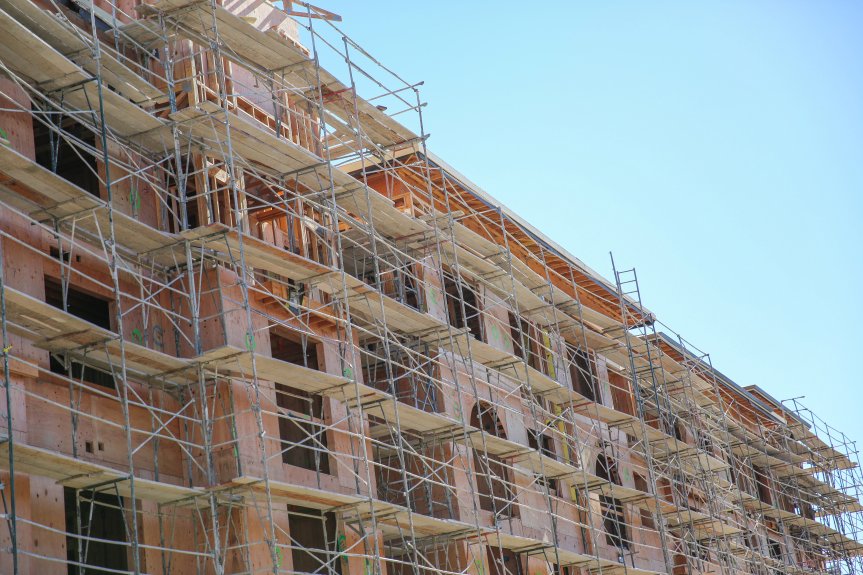SV@Home Executive Director, weighs in on commercial and housing development permits and where it leaves our jobs – housing imbalance.
Permits for new homes sink in Santa Clara County
Survey data shows 2019 is off to a slow start for Bay Area housing growth
The number of permits for new homes fell across California and most of the Bay Area during the first half of 2019, despite concerns about a lack of housing supply and 10 straight years of sustained regional job growth.
Santa Clara County issued permits for 2,781 housing units from January through June this year, a precipitous drop from the 3,808 permits issued over the same period in 2018, according to preliminary data collected by the U.S. Department of Housing and Urban Development (HUD). Housing advocates and developers alike point to the region’s high cost of construction, labor shortages and tariffs as factors in the decline.
Mountain View appears to be an outlier, with the preliminary data showing the city still leads the way on housing among suburban Peninsula cities.
Alameda, Contra Costa and San Mateo counties also saw permits fall over the same period, contributing to the sudden reversal of otherwise consistent growth across California extending back to the 2008 recession. An analysis by the Public Policy Institute of California found the state is on track for a 16% decline in new housing this year, raising questions over whether the state can meet its goal of adding millions of new homes by 2025.
“It underlines the need for a deeper understanding of housing markets and what, if any, action can be taken at state and local levels to move the needle,” according to the report.
Part of the problem is that the price to build is through the roof, and residential projects that used to pencil out are no longer feasible, said Leslye Corsiglia, executive director of the nonprofit SV@Home. Despite the regional housing crisis and the need to build more homes, she said market forces are working against residential projects. High costs are causing some developers to revoke proposals, while projects that have already been approved are sitting inactive because of rising costs.
“What we’ve seen in San Jose in particular is they have about 7,000 units right now in the pipeline, but most are stalled,” Corsiglia said, adding that a grand total of 1,400 units have been completely withdrawn from the city’s planning process.
Housing developers in Mountain View have also cited the high cost of construction over the last year. A representative from FortBay, the developer that won approval for a massive 716-unit apartment project at 777 W. Middlefield Road last year, told Mountain View City Council members in October that the viability of the project was thrown in jeopardy after per-square-foot costs ballooned from $250 to $400 since it was originally proposed.
FortBay later agreed to partner with the Mountain View Whisman School District to share in the costs in exchange for units reserved for teacher housing — a deal that was cited in a city staff report as the primary reason the project remained financially feasible for the developer.
An April report on international construction costs by the management and consulting firm Turner & Townsend found that the San Francisco Bay Area is, in fact, the most expensive place to build in the world, costing an average of $417 per square foot, followed by New York at $368. The report found a shortage of skilled labor, high hourly wages and U.S.-imposed tariffs on steel imports are all contributing to the sky-high costs, which are expected to increase by another 6% in 2019.
Commercial development, particularly tech offices, typically has a greater return on investment and appears to be unaffected by the high cost of construction, Corsiglia said, which could explain the consistent job growth numbers reported in the Bay Area through the first half of 2019. Data released last month by California’s Economic Development Department shows that the South Bay metropolitan area — defined as Santa Clara County and San Benito County — added 27,500 jobs since June 2018, bringing employment up to more than 1,160,000 as of last month. That amounts to roughly 3.8 new jobs for every housing permit issued in the two counties during the same period.
The tight construction market doesn’t appear to be having much of an effect on Mountain View’s housing growth, however. Data on the HUD website shows the city is still building far more housing than neighboring suburban cities in Santa Clara County, issuing permits for 589 housing units in the first half of 2019. Though preliminary and still subject to change, the early count places the city second only to San Jose, which issued permits for 1,239 units over the same period, meaning Mountain View had the highest growth of any individual city in the county when adjusted for population.
As of March, Mountain View had 1,832 new residential units under construction, 1,626 units recently approved by the City Council and nearly 3,000 units under review by planning staff. Assistant Community Development Director Wayne Chen said Mountain View has issued more permits this year than in all of 2018 — when the city added 330 net new units — and is still doing “quite well.” He said he was hesitant to call the dip in regional permits a cause for concern.
“Although there needs to be housing production, this could be a year-over-year change. It doesn’t necessarily mean a trend,” Chen said. “So whether that maintains throughout the year or whether that’s a longer-term thing, we would have to see.”
Mountain View’s internal permit numbers are different than what HUD has, Chen said, and last year indicates the federal agency’s survey may be an undercount for the number of new housing units authorized. While city staff has heard concerns from developers and should be cognizant of how much it costs to build, Chen said, trends in housing growth are hard to pin on any one factor.
“It’s probably objectively true that things are more expensive, but whether that translates into projects being able to pencil out can be a little murky,” he said.
While factors like federal trade policy are completely out of the hands of local policymakers, there are steps that cities can take to ease the burden on residential developers, Corsiglia said. Cities can peel back barriers by reducing fees, streamlining the development process and ease zoning restrictions. Reduction of parking requirements and allowing higher density on a property can also help in making a housing project feasible, she said.
“Construction is slowing at a time when we need (housing) now more than ever, and we need to figure out ways to help developers move forward and deal with these challenges,” Corsiglia said. “And I think that’s through some streamlining and ways that cities themselves can help reduce costs.”
City-imposed fees have been a sticking point in plans to build thousands of homes in the city’s North Bayshore office park, which was recently rezoned to allow up to 9,850 housing units. Property owners in the area — namely Google and Sobrato — warned last year that the requirement to set aside 15% to 20% of the units as affordable housing, on top of escalating park and schools fees imposed on residential development, could threaten the financial viability of the housing-heavy vision for the area. Municipal fees were likely to exceed $100,000 per unit, according to a city staff report, pushing the total building cost to $645,000 per unit.
Giving up those fees may be a hard sell. Representatives from the two school districts serving North Bayshore, the Mountain View Whisman School District and the Mountain View-Los Altos High School District, have long argued that there simply isn’t enough money to build classrooms for the students who will live in the area. Mountain View Whisman school board members in particular have asked for dedicated land for a school site and funding to construct school facilities, which is one of the primary reasons for the escalating fees. The board has shown no support for a bond measure to pay for the anticipated influx of students, insisting that the developers — not the taxpayers — should foot the bill.

